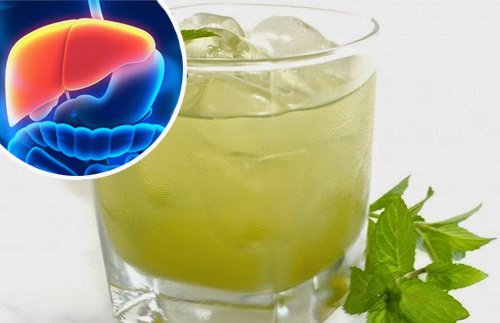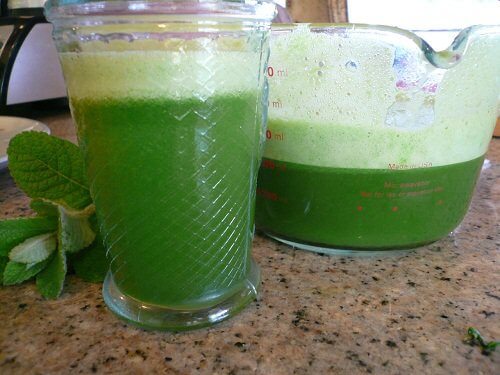14 Remedies to Remove Heavy Metals from the Liver


Written and verified by psychologist Valeria Sabater
Heavy metals. Why is it important to remove them from your body? Well, simply because they are toxins. That means they’re harmful elements that damage your cells and make you sick. Most of them usually accumulate in your liver and, over the long term, can cause serious health problems.
Therefore it’s important to know how you can adequately detoxify your liver in order to eliminate these heavy metals which are capable of damaging not only this organ, but also the brain, kidneys, intestines, and your immunological system. So then why not start putting these simple points of advice into practice today?
1. The importance of removing heavy metals from your body

These heavy metals are classified as either organic or inorganic. The organic metals have their origin in certain medications. But be careful, as these harmful elements are also included in products such as alcohol and tobacco. These are habits you should avoid for the sake of your health and well-being.
Also Read: Is Your Liver Inflamed
And what are the heavy metals of inorganic origin? The so-called inorganic toxins are those that we consume through pollution and the foods we eat. Sometimes just working around chemicals or where heavy metals are handled can cause your health to suffer.
Sooner or later you end up suffering due to not correctly eliminating these built-up toxins from your body. And do you know where these heavy metals stay in the body? Usually in the liver. This is a health risk.
2. What are the heavy metals that commonly get into the body?

We are sure this is going to surprise you. Sometimes, despite your efforts to maintain a healthy lifestyle, you still end up consuming a wide range of toxins. Urban contamination, the water you drink, or the chemicals found in many foods are common sources of these. Below we will give you a small list of these possible sources:
- Arsenic: this is the substance most harmful to the body. Do you know where you frequently find it? In tap water. The problem originates with the use of pesticides and natural filtration. This is a serious problem. You might also come into contact with this metal when you work in an environment that has it.
- Lead: this usually gets into your system by consuming things that come into contact with water pipes. Certain pesticides present in foods such as vegetables might also contribute to it.
- Mercury: Do you know how mercury gets into your body? By means of contaminated fish and seafood.
- Cadmium: cadmium is present in many agricultural fertilizers. Without realizing it, you may end up consuming this daily through fruits and vegetables that contain this harmful heavy metal. Although there is no need for excessive worry, since the amounts are usually very low, in the long term, they can be dangerous. That makes it important to know how to detox your body.
14 remedies to detox heavy metals from your liver

2. Dandelion: How about making a healthy dandelion tea after your lunch? This is one of the best plants to detoxify the body.
3. Artichoke water: you should use this remedy twice a week. The recipe requires that you cook two artichokes in a liter (4.2 cups) of water. When they get soft, remove the artichokes from the water. You can drink this throughout the day. It’s marvelous! As a suggestion, if you add a little lemon juice, it’ll become even more beneficial.
4. Chlorella (Chlorella pyrenoidosa): this is also wonderful for detoxifying the body. Where do you find it? In natural or specialized food stores.
5. Chlorophyll: Chlorophyll can also easily be found in natural food stores. It’s an excellent natural resource to care for the liver.
6. Cilantro (Coriander): From now on, don’t forget to include a few cilantro leaves in your salads and soups. Why? Because they help care for the immune system.
7. Grapefruit and orange juice: this is an excellent combination of Vitamin C that also helps detox your body from within. You can drink this juice every morning. You’ll also love it.
8. Oatmeal: another excellent option for breakfast. Oatmeal is rich in zinc and selenium, two minerals that help care for your immune system.
9. Whole grain rice: another cereal that is also rich in zinc that will help care for your health. It’s also tasty and an excellent aid for detoxifying.
10. Peaches: this juicy, tasty and tempting fruit also contains a natural treasure trove of vitamins and minerals, which are perfect for keeping your health at a good level.
11. Broccoli: You must know that broccoli is one of the best vegetables for health. But it’s important to only buy organic broccoli, those that have been grown without the use of pesticides.
12. Raw spinach: spinach is also very rich in chlorophyll. If you eat it raw, you’ll benefit even more from its wonderful properties.
See Also: Chlorophyll, An Amazing Natural Remedy
13. Brazil nuts (Bertholletia excelsa): These are also delicious! Not only that, but they’re also rich in zinc and selenium. These are perfect for helping to eliminate heavy metals.
14. Onions: Have you eaten an onion today? Have you also added some to your salad? Remember they are rich in sulphur, a fabulous aid to neutralize heavy metals such as aluminum.
All cited sources were thoroughly reviewed by our team to ensure their quality, reliability, currency, and validity. The bibliography of this article was considered reliable and of academic or scientific accuracy.
- Gobierno de La Rioja. (n.d.). Metales pesado y salud. Gobierno de la Rioja https://www.larioja.org/medio-ambiente/es/calidad-aire-cambio-climatico/calidad-aire/red-biomonitarizacion-metales-pesados-rioja/salud-metales-pesados
- Fernández-Fernández, F. J., González-González, C., Ameneiros-Lago, E., Martínez-Debén, F. S., Pía, G., & Sesma, P. (2002, March). Intoxicación crónica por plomo. In Anales de Medicina Interna (Vol. 19, No. 3, pp. 36-38). Arán Ediciones, SL. http://scielo.isciii.es/scielo.php?pid=S0212-71992002000300006&script=sci_arttext&tlng=en
- OCU. (2019). Mercurio y pescado: recomendaciones de consumo. Organización de Consumidores y Usuarios https://www.ocu.org/alimentacion/alimentos/noticias/mercurio-en-pescado-un-problema-serio522454#
- Rodríquez-Serrano, M., Martínez-de la Casa, N., Romero-Puertas, M. C., Del Río, L. A., & Sandalio, L. M. (2008). Toxicidad del cadmio en plantas. Revista Ecosistemas, 17(3). https://www.revistaecosistemas.net/index.php/ecosistemas/article/view/409
- Ezeala, C. C., Nweke, I. N., Unekwe, P. C., El-Safty, I. A., & Nwaegerue, E. (2009). Fresh garlic extract protects the liver against acetaminophen-induced toxicity. The Internet Journal of Nutrition and Wellness, 7(1). http://ispub.com/IJNW/7/1/12515
- Susnik, F. (1982). The present state of knowledge about the medicinal plant Taraxacum officinale Weber. Med Razgl, 21, 323-328.
- Ayán, N. L. Las virtudes de la alcachofa: De la huerta. https://www.fitoterapia.net/archivos/201306/alcachofera.pdf
- Lanfer-Marquez, U. M., Barros, R. M., & Sinnecker, P. (2005). Antioxidant activity of chlorophylls and their derivatives. Food Research International, 38(8-9), 885-891. https://www.sciencedirect.com/science/article/abs/pii/S0963996905000918
- Abascal, K., & Yarnell, E. (2012). Cilantro—Culinary Herb or Miracle Medicinal Plant?. Alternative and Complementary Therapies, 18(5), 259-264. https://www.liebertpub.com/doi/pdf/10.1089/act.2012.18507
- Fernández-León, M., Fernández-León, A., Lozano, M., Ayuso, M., GONZÁLEZ, J., & González-Gómez, D. (2011). Antioxidantes naturales y capacidad antioxidante en Brassicas. Actas de Horticultura, 58, 191-194. http://www.sech.info/ACTAS/Acta%20nº%2058.%20XII%20Jornadas%20del%20Grupo%20de%20Horticultura/Cap%C3%ADtulo%204.%20Calidad%20y%20postcosecha/Antioxidantes%20naturales%20y%20capacidad%20antioxidante%20en%20Brassicas.pdf
This text is provided for informational purposes only and does not replace consultation with a professional. If in doubt, consult your specialist.








